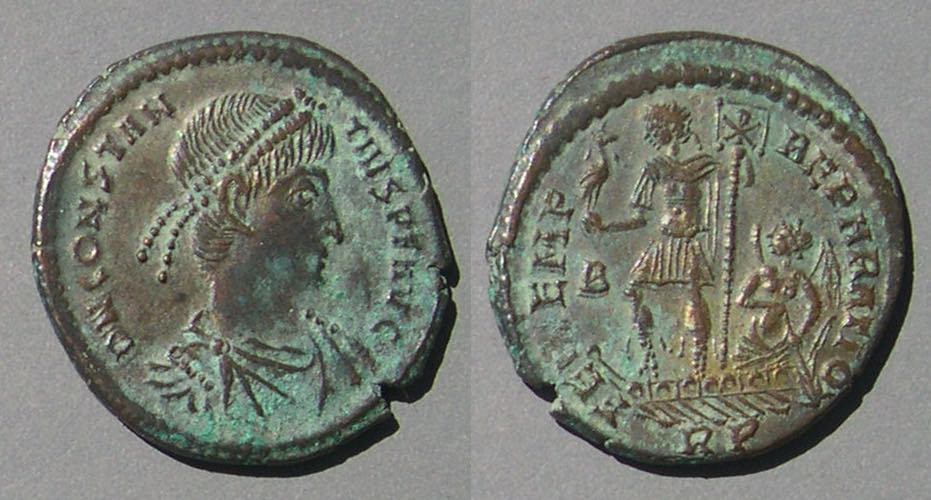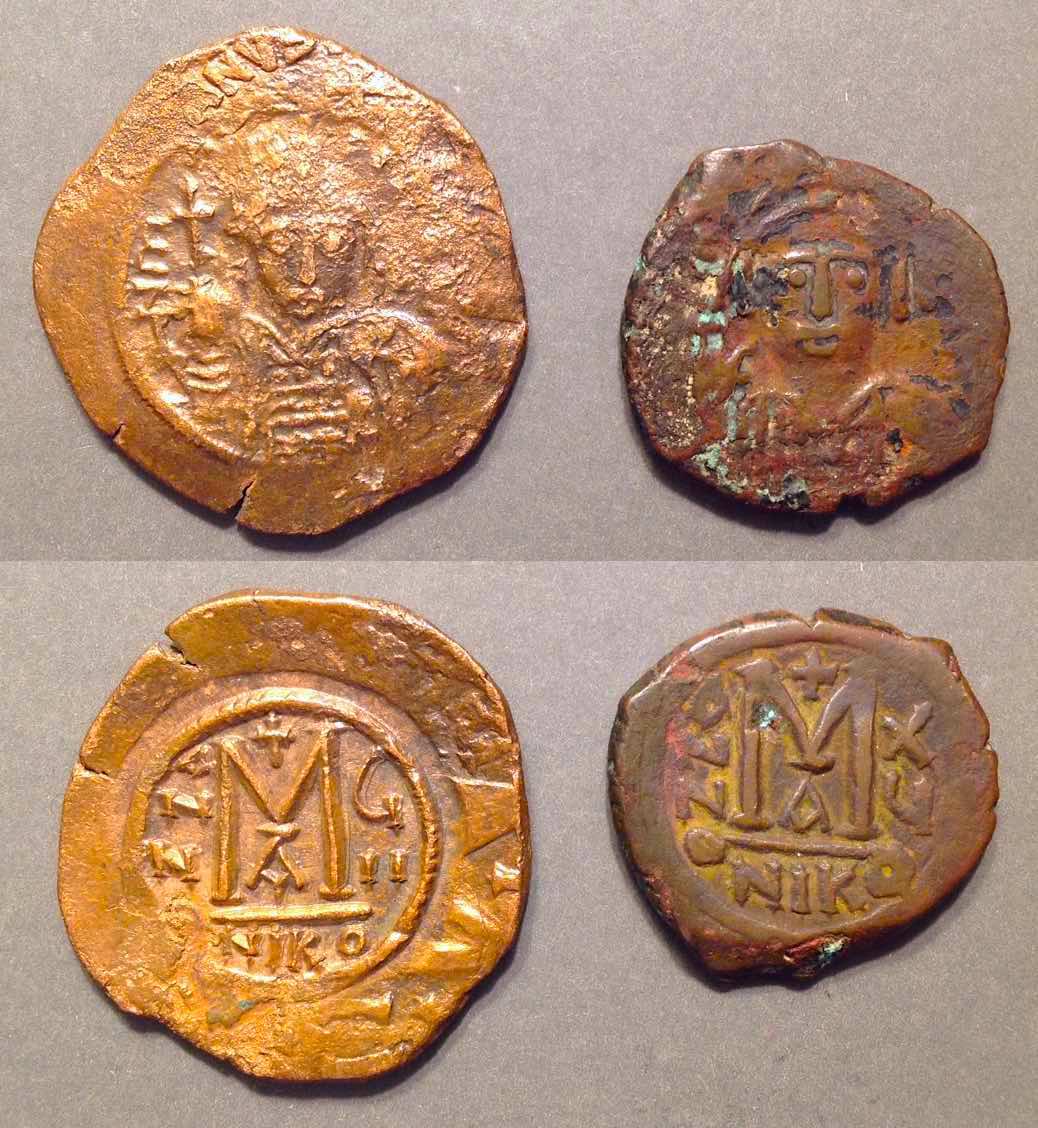Size matters
This page makes two points:
1) Photos of coins do not tell the size of the coin unless you already know what you are looking at.
2) You should pay attention to the actual size of a coin because two coins supposedly of the same "type" can differ in size in an important way.
Usually, larger is better. Larger coins are more impressive in hand (but, maybe not more impressive in a photo) and worth more.
Look at these two coins of the same design.


Both are FEL TEMP REPARATIO "galley" coins of Constantius II, struck 348-361. The one on the left is is higher grade, but what about their sizes?
The one on the left is 25 mm, very slightly larger than a US quarter. The one on the right is only 18 mm, smaller than a US cent. The one on the left weighs more than twice as much. It is, in hand, far more impressive. Was it obvious from the photo that it was so much larger?
When buying coins you must pay attention to the sizes of the coins; on-line photos can be deceptive.
Look at these two coins photographed side-by-side. Both are Byzantine coins identified as "Sear 512".
 Measurement shows the design is the same size. but the coin on the left is larger than normal.
Measurement shows the design is the same size. but the coin on the left is larger than normal.
Sometimes you can see that a coin is larger than normal because the die-diameter is visible on an over-large flan. The reverse of the coin on the left makes it clear the flan is much larger than necessary.
35 mm. (Much larger than a US 50-cent piece.) 11.58 grams.
Byzantine emperor Maurice, 582-602 AD, struck year 8 (589/90) at Nicomedia. Sear 512.
Yes, it is identified as "Sear 512", but that is not the whole story. Look at how large it is compared to the design.
Look how large it is compared to the coin on the right with the same Sear number. They are not from the same year, but the sizes of the designs are the same; it is only the flan size that makes the big difference.
Why is it so large? Byzantine coins are very often overstruck on previous coins. At 12:00 on the obverse "ANVS" from the undertype can be seen and at 3:30 on the reverse is the top of the large off-center "M" of the undertype. With that orientation "II" is clear on the lower right of the "M" and above it "X" is partially there. The size of the flan is correct for a coin of Justinian I (527-565) from year 22 (548/9) arranged:
X
X
I I
but the flan, at 35 mm, is significantly larger than the beading (22 mm) and the die (25 mm). Of course, if you use an old coin as a flan your new coin will be the size of the old coin which is not necessarily the intended size of the new coin.
Conclusion. There can be large photos of small coins and some types come in different sizes which are not distinguished by a photo. (e.g. late Roman bronze "soldier spearing fallen horseman" coins with the same design can range from 24 to 16 mm. The small boar/lion's head silver coins of Cyzicus come in various sizes that look the same.) When buying coins you must pay attention to the sizes of the coins; on-line photos can be deceptive.
Go to the main Table of Contents page of this whole site.


 Measurement shows the design is the same size. but the coin on the left is larger than normal.
Measurement shows the design is the same size. but the coin on the left is larger than normal.